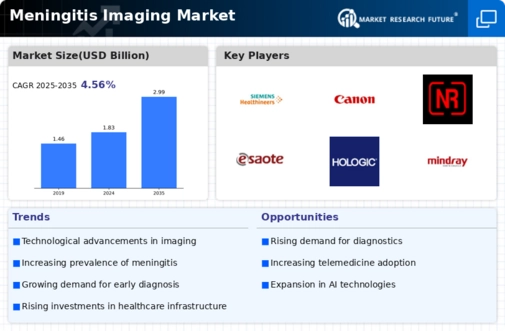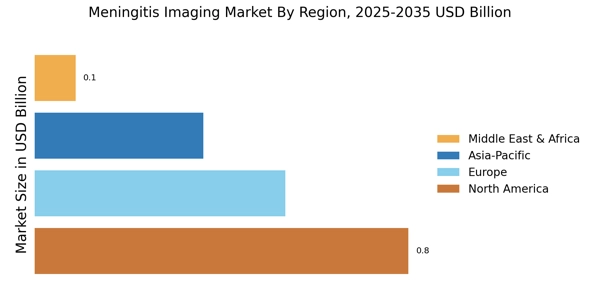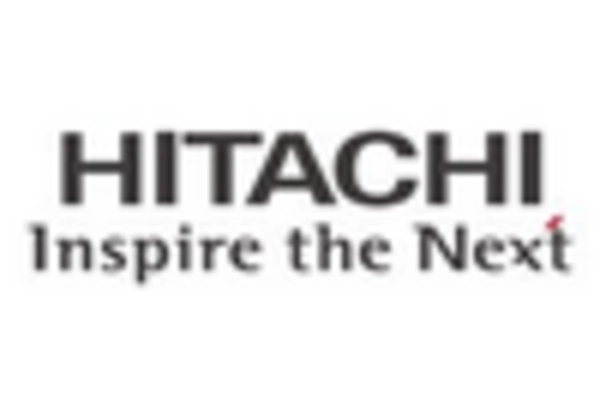Rising Incidence of Meningitis
The increasing incidence of meningitis cases is a primary driver for the Meningitis Imaging Market. According to health statistics, the prevalence of bacterial and viral meningitis has shown a notable rise, necessitating advanced imaging techniques for accurate diagnosis. This trend is particularly evident in regions with limited access to vaccines and healthcare resources. As healthcare providers seek to improve diagnostic accuracy, the demand for imaging modalities such as MRI and CT scans is expected to surge. The Meningitis Imaging Market is likely to benefit from this growing need, as timely and precise imaging can significantly impact patient outcomes and treatment efficacy.
Increased Awareness and Education
Growing awareness and educational initiatives regarding meningitis are contributing to the expansion of the Meningitis Imaging Market. Public health campaigns aimed at educating communities about the symptoms and risks associated with meningitis have led to earlier diagnosis and treatment. As individuals become more informed, they are more likely to seek medical attention promptly, resulting in a higher demand for imaging services. This heightened awareness is particularly crucial in regions where meningitis is endemic. Consequently, the Meningitis Imaging Market is poised to grow as healthcare providers respond to the increased need for imaging to support timely diagnosis and intervention.
Government Initiatives and Funding
Government initiatives aimed at combating meningitis are playing a pivotal role in shaping the Meningitis Imaging Market. Various health authorities are allocating funds to improve diagnostic capabilities and enhance healthcare infrastructure. These initiatives often include the procurement of advanced imaging equipment and the establishment of specialized centers for meningitis diagnosis. Such investments not only improve access to imaging services but also foster research and development in the field. As a result, the Meningitis Imaging Market is likely to see a boost in demand for imaging technologies, driven by supportive government policies and funding aimed at improving public health outcomes.
Growing Demand for Early Diagnosis
The increasing emphasis on early diagnosis of meningitis is a significant driver for the Meningitis Imaging Market. Early detection is crucial for effective treatment and can drastically reduce morbidity and mortality rates associated with the disease. As healthcare systems prioritize rapid diagnostic processes, the demand for imaging services that facilitate quick and accurate diagnosis is expected to rise. This trend is particularly evident in emergency care settings, where timely imaging can lead to immediate intervention. Consequently, the Meningitis Imaging Market is likely to expand as healthcare providers invest in advanced imaging technologies to meet the growing need for early diagnosis.
Advancements in Imaging Technologies
Technological innovations in imaging modalities are propelling the Meningitis Imaging Market forward. Recent developments in MRI and CT imaging techniques have enhanced the ability to detect and diagnose meningitis with greater precision. For instance, high-resolution imaging and advanced contrast agents have improved visualization of brain structures and potential complications associated with meningitis. The market is witnessing a shift towards more sophisticated imaging solutions, which are becoming increasingly accessible to healthcare facilities. This trend suggests that as imaging technologies continue to evolve, the Meningitis Imaging Market will likely experience substantial growth, driven by the demand for enhanced diagnostic capabilities.


















Leave a Comment